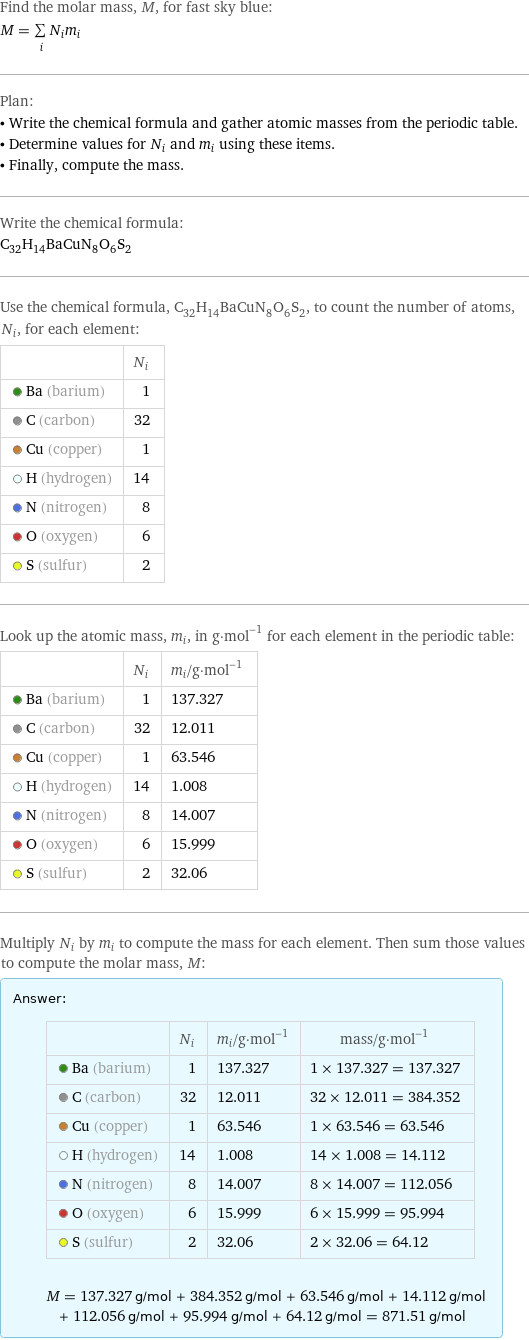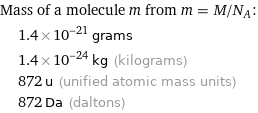Input interpretation

fast sky blue | molar mass
Result

Find the molar mass, M, for fast sky blue: M = sum _iN_im_i Plan: • Write the chemical formula and gather atomic masses from the periodic table. • Determine values for N_i and m_i using these items. • Finally, compute the mass. Write the chemical formula: C_32H_14BaCuN_8O_6S_2 Use the chemical formula, C_32H_14BaCuN_8O_6S_2, to count the number of atoms, N_i, for each element: | N_i Ba (barium) | 1 C (carbon) | 32 Cu (copper) | 1 H (hydrogen) | 14 N (nitrogen) | 8 O (oxygen) | 6 S (sulfur) | 2 Look up the atomic mass, m_i, in g·mol^(-1) for each element in the periodic table: | N_i | m_i/g·mol^(-1) Ba (barium) | 1 | 137.327 C (carbon) | 32 | 12.011 Cu (copper) | 1 | 63.546 H (hydrogen) | 14 | 1.008 N (nitrogen) | 8 | 14.007 O (oxygen) | 6 | 15.999 S (sulfur) | 2 | 32.06 Multiply N_i by m_i to compute the mass for each element. Then sum those values to compute the molar mass, M: Answer: | | | N_i | m_i/g·mol^(-1) | mass/g·mol^(-1) Ba (barium) | 1 | 137.327 | 1 × 137.327 = 137.327 C (carbon) | 32 | 12.011 | 32 × 12.011 = 384.352 Cu (copper) | 1 | 63.546 | 1 × 63.546 = 63.546 H (hydrogen) | 14 | 1.008 | 14 × 1.008 = 14.112 N (nitrogen) | 8 | 14.007 | 8 × 14.007 = 112.056 O (oxygen) | 6 | 15.999 | 6 × 15.999 = 95.994 S (sulfur) | 2 | 32.06 | 2 × 32.06 = 64.12 M = 137.327 g/mol + 384.352 g/mol + 63.546 g/mol + 14.112 g/mol + 112.056 g/mol + 95.994 g/mol + 64.12 g/mol = 871.51 g/mol
Unit conversion

0.8715 kg/mol (kilograms per mole)
Comparisons

≈ 1.2 × molar mass of fullerene ( ≈ 721 g/mol )

≈ 4.5 × molar mass of caffeine ( ≈ 194 g/mol )

≈ 15 × molar mass of sodium chloride ( ≈ 58 g/mol )
Corresponding quantities

Mass of a molecule m from m = M/N_A: | 1.4×10^-21 grams | 1.4×10^-24 kg (kilograms) | 872 u (unified atomic mass units) | 872 Da (daltons)

Relative molecular mass M_r from M_r = M_u/M: | 872